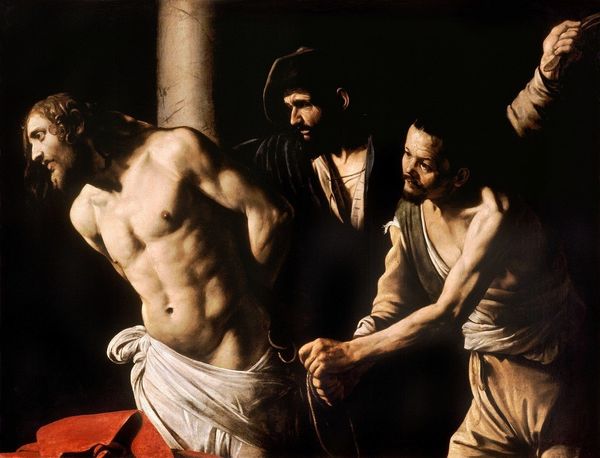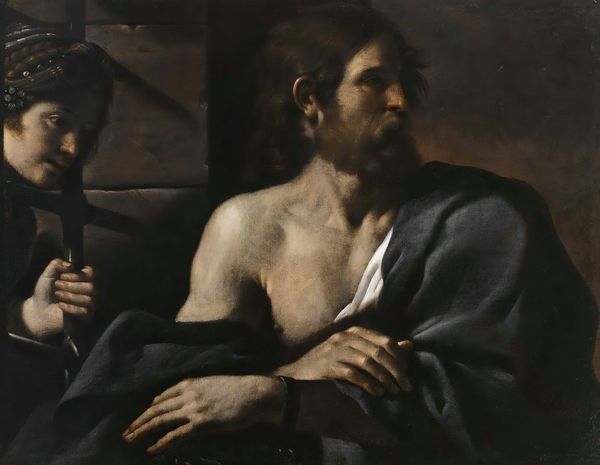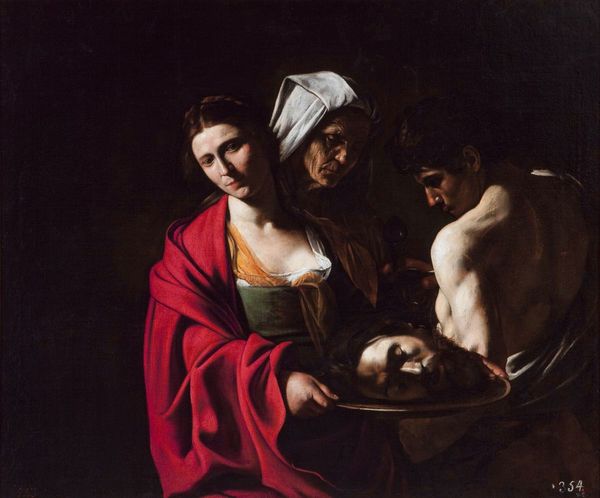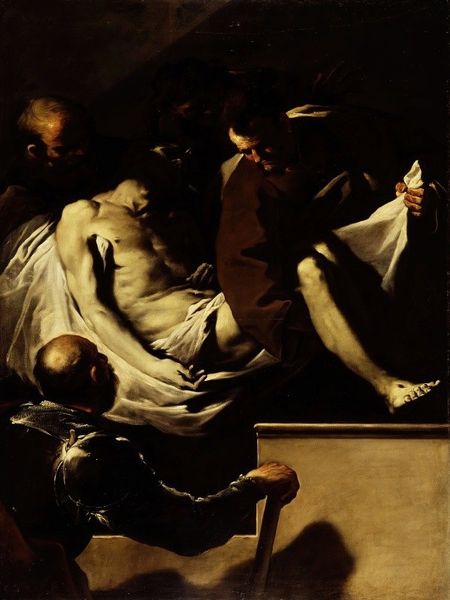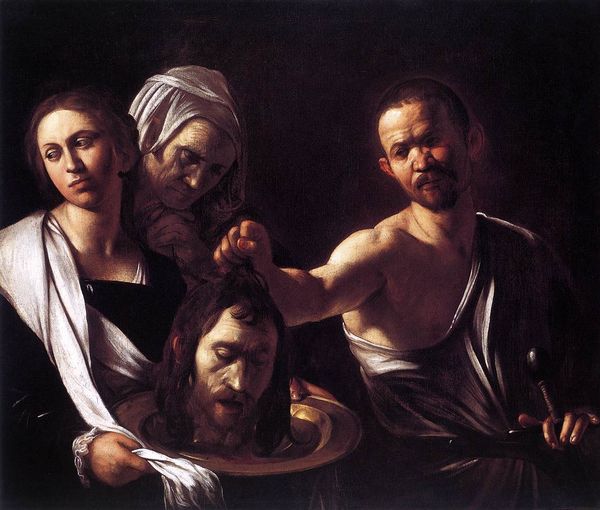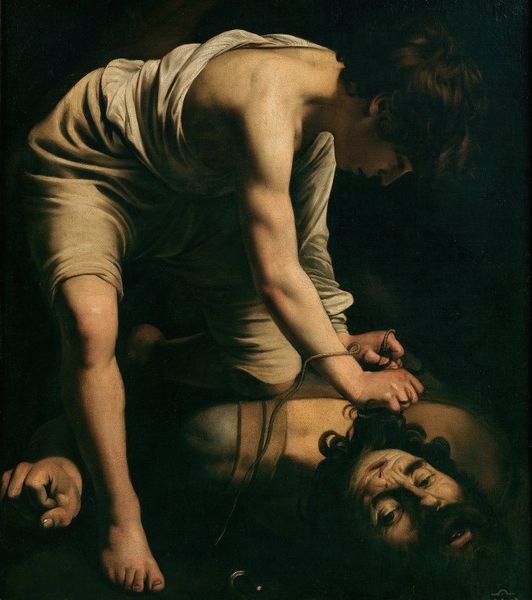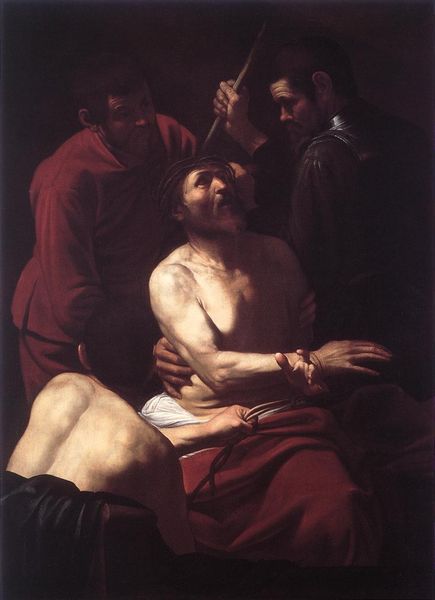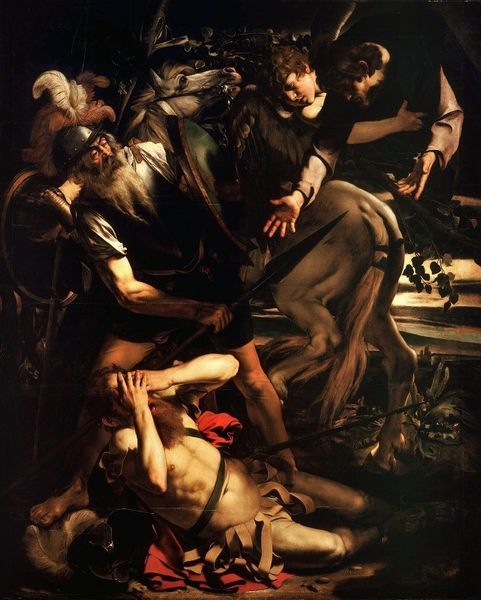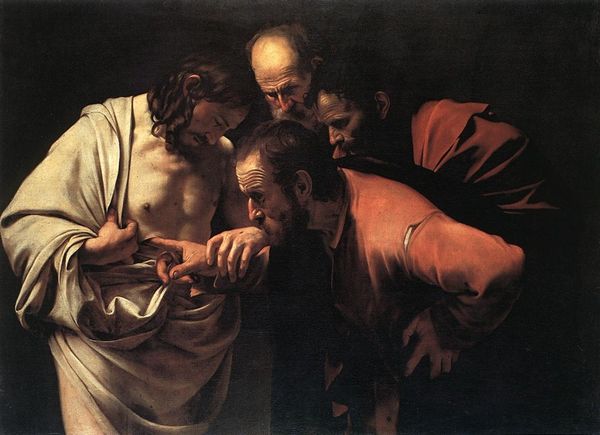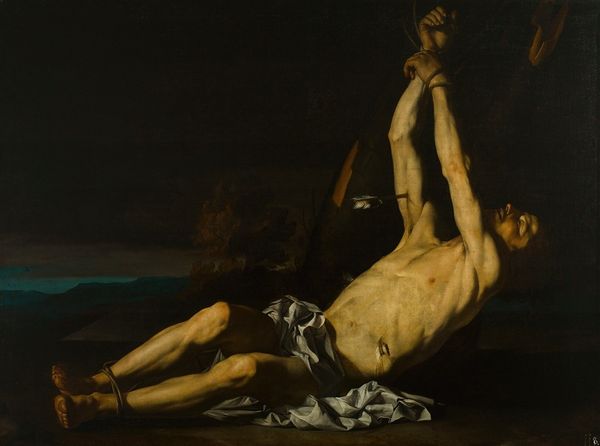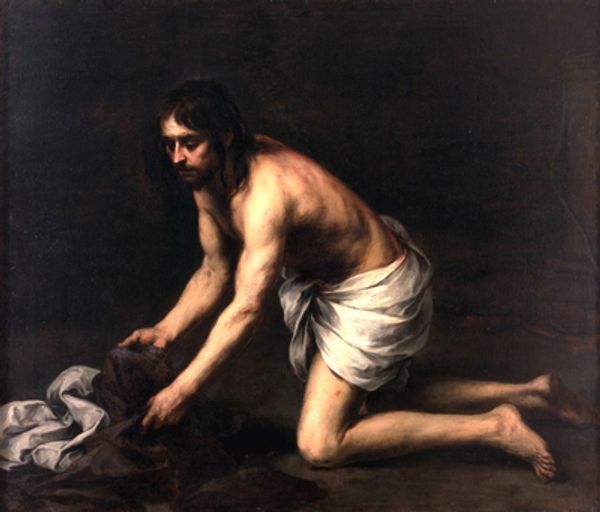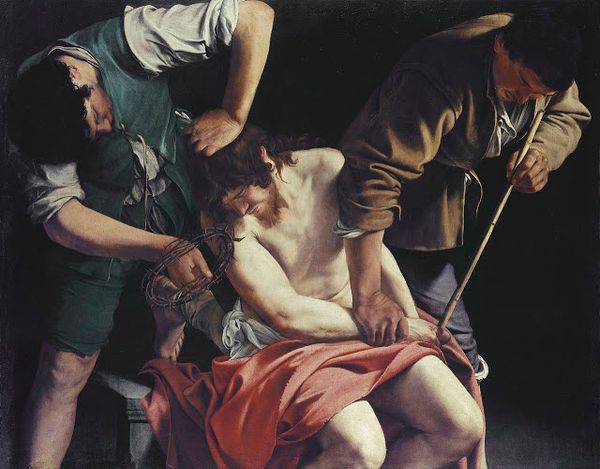
painting, oil-paint
#
portrait
#
baroque
#
painting
#
oil-paint
#
figuration
#
jesus-christ
#
christianity
#
history-painting
#
nude
#
christ
Dimensions: 140 x 118 cm
Copyright: Public domain
Curator: "Flagellation of Christ" by Jusepe de Ribera, painted around 1617. An oil painting, currently installed in our gallery. Editor: It's stark. The tenebrism is almost overwhelming; it's difficult to discern the figures from the oppressive darkness. Curator: Ribera, deeply rooted in the Neapolitan Baroque style, was fascinated with depicting moments of intense physical and emotional realism. Consider the economic backdrop: Naples at the time, rife with poverty, struggling to thrive under Spanish viceroyalty. Does the raw emotion in the work mirror the social struggles of the Neapolitan underclass? Editor: I see how you’re contextualizing Ribera’s environment. The composition itself focuses intently on Christ's form. Observe the dramatic use of light and shadow on Christ's exposed back. There’s a pronounced musculature there that directs the viewer’s eye. It’s almost sculptural in its definition. The rendering of light is really creating the drama. Curator: And that texture, which is really made possible by developments in oil paint techniques...Do you see in it echoes of Caravaggio’s influence on painting practice, particularly within the context of workshop apprenticeship and the circulation of labour? Ribera uses material innovations towards emotionally affecting art for an audience who might be thinking about pain quite often. Editor: Yes, definitely a Caravaggesque drama playing out. Notice how Christ’s bowed head creates a contained, triangular shape with his arm, drawing our attention down, while the other figure’s upward gaze suggests an imbalance—a disquieting break in the formal harmony. The red is also quite central there. Curator: Red, often symbolizing the blood and the sacrifice... Did such symbolic associations gain even greater relevance and urgency amid Counter-Reformation iconography when such narratives were material to spiritual life? Editor: Material and form coalescing; the composition becomes the argument, as potent in its emotional resonance as it is in its symbolic representation. Curator: I agree! It's fascinating to see how materiality shapes and reflects both human and cultural conditions in such work, and so differently from our modern lives! Editor: Yes, this kind of approach—analyzing forms with history as something crucial that makes paintings like this interesting and worth understanding deeply—helps viewers grasp the complexities embedded in these paintings.
Comments
No comments
Be the first to comment and join the conversation on the ultimate creative platform.
